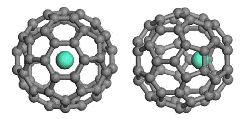Chemistry, Department of: Faculty Series

Xiao Cheng Zeng Publications
Document Type
Article
Date of this Version
2016
Citation
J. Mater. Chem. C, 2016, 4, 3106--3112
DOI: 10.1039/c6tc00130k
Abstract
The recently synthesized monolayer PtSe2 belongs to the class of two-dimensional transition metal dichalcogenide (TMDC) materials (Nano Lett., 2015, 15, 4013). Based on first-principles calculations, we show that the band gaps of monolayer and bilayer PtSe2 can be tuned over a wide range via strain engineering. Both isotropic and uniaxial strains are investigated. For bilayer PtSe2, the vertical out-of-plane strain is also considered. In most cases, the strain can reduce the band gap except for the bilayer PtSe2 under the isotropic strain (Ɛ≤ 4%) for which the band gap can be slightly enlarged. Importantly, the monolayer can be transformed from the indirectgap to the direct-gap semiconductor at the compressive strain of Ɛy = -8%. Moreover, the bilayer can undergo the semiconductorto- metal (S–M) transition at a critical vertical strain due to the chemical interaction (p orbital coupling) between the Se atoms of the two opposite layers. Overall, the ability to modulate the band gap of monolayer and bilayer PtSe2 over an appreciable range of strains opens up new opportunities for their applications in nanoelectronic devices.


Comments
Used by permission